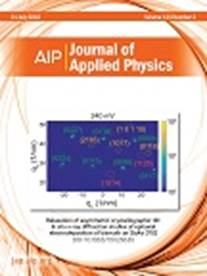Teachers hone problem solving skills at the eXploration Station
Over the course of three days, the teachers participated in a variety of lessons and activities geared towards basic engineering, problem solving and scientific thinking. This Science Snapshot provided teachers with ideas and activities to better implement the principles of engineering in their classrooms, and allowed them to dry-run prepared materials. The focus of their investigations? To eventually design and build a device to measure light penetration. The teachers were then able to test their designs in Cayuga Lake aboard the Floating Classroom.
 High-quality epitaxial thin films are key components of almost all modern electronic devices. During epitaxial thin film growth, lattice mismatch between the substrate and the film generates elastic strain, which eventually leads to defects that relieve the strain beyond certain thicknesses of film growth.
High-quality epitaxial thin films are key components of almost all modern electronic devices. During epitaxial thin film growth, lattice mismatch between the substrate and the film generates elastic strain, which eventually leads to defects that relieve the strain beyond certain thicknesses of film growth.